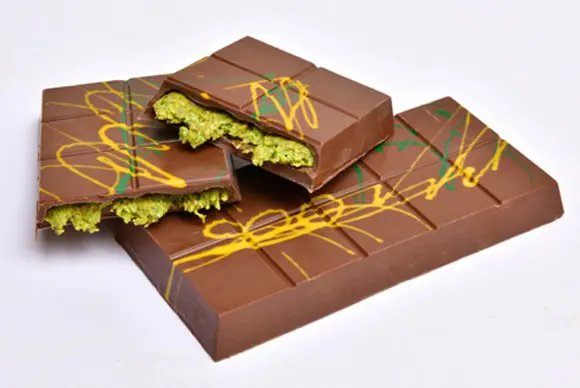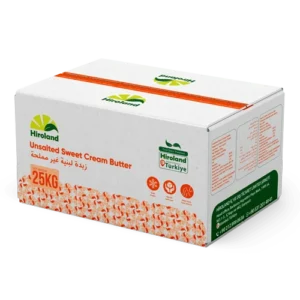The future of dairy packaging relies on growing environmental awareness, driving industries to adopt sustainable solutions. Companies are investing in biodegradable and recyclable packaging to minimize waste and promote a greener future.
Moving Towards Sustainability
As the world becomes increasingly aware of the environmental challenges we face, industries across the board are looking for ways to minimize their ecological footprint. The dairy industry, in particular, is undergoing a significant shift towards sustainable packaging solutions, reflecting consumers’ growing demand for environmentally friendly products. With more people prioritizing eco-conscious choices, companies in the dairy sector are investing in innovative, biodegradable, and recyclable packaging to reduce waste and create a greener future.
Why Sustainability Matters in Dairy Packaging?
Packaging plays a critical role in the dairy industry, helping to ensure the freshness and safety of products like milk, cheese, and yogurt. However, traditional dairy packaging, which often involves plastic and non-recyclable materials, contributes significantly to the global waste problem. Single-use plastics, in particular, have a devastating impact on the environment, from overflowing landfills to polluting oceans.
With consumers increasingly demanding sustainable alternatives, the dairy industry is being pushed to innovate. According to research, 60% of consumers are more likely to purchase a product if it has eco-friendly packaging. This shift is driving dairy companies to explore new ways to package their products responsibly.
Biodegradable Packaging: The New Frontier
One of the most promising trends in the future of dairy packaging is the rise of biodegradable materials. Biodegradable packaging is made from natural substances that can break down more easily in the environment compared to traditional plastics. For dairy products, this means packaging made from materials like plant-based plastics, paper, and even edible coatings that safely decompose without leaving behind harmful residues.
For instance, companies are now using polylactic acid (PLA), a type of plastic made from corn starch, to package dairy products. Unlike petroleum-based plastics, PLA is biodegradable and compostable, making it an ideal solution for reducing plastic waste in landfills.
Recyclable Packaging: The Continued Importance
While biodegradable options are gaining traction, recyclable packaging continues to be a key component in the sustainable dairy packaging movement. Recycling reduces the need for virgin materials, lowers energy consumption, and helps keep waste out of landfills.
Companies are investing in creating more easily recyclable packaging. For example, some dairy brands are transitioning to monomaterial packaging, which is made from a single type of plastic, making it easier to recycle. Additionally, there is a move towards designing packaging that uses fewer materials overall, further reducing its environmental impact.

The Role of Technology in Dairy Packaging Innovation
Advancements in technology are also driving the development of sustainable dairy packaging. Smart packaging solutions, such as oxygen scavengers and antimicrobial coatings, help extend the shelf life of dairy products, reducing food waste. By combining sustainability with functionality, these innovations address both environmental and practical concerns.
In addition, digital printing technology is helping companies minimize excess packaging by allowing for more precise and customized designs. This reduces material waste and enhances the efficiency of packaging production.
Challenges Ahead Dairy Industry
Despite the progress being made, the shift towards sustainable packaging in the dairy industry is not without its challenges. Biodegradable and recyclable materials often come at a higher cost, which can be a barrier for smaller companies. Moreover, educating consumers about the proper disposal and recycling of these materials is essential to their success in reducing environmental impact.
Governments and policymakers also have a role to play in facilitating this transition. Implementing regulations and incentives that encourage the use of sustainable packaging can help create a level playing field for businesses and accelerate the adoption of eco-friendly solutions.
Looking Forward: A Greener Future for Dairy Packaging
The future of dairy packaging is undeniably green. With consumers, businesses, and governments all recognizing the importance of reducing waste, the dairy industry is poised to lead the charge in sustainable packaging innovation. From biodegradable materials to recyclable options and cutting-edge technologies, the journey towards a more sustainable future is well underway.
As we move forward, it’s clear that environmentally conscious packaging is no longer just a trend—it’s becoming a necessity. By embracing these solutions, the dairy industry can play a vital role in protecting the environment while meeting the needs of eco-conscious consumers.
Hiroland’s milk powder packaging not only ensures product quality but also reflects the company’s commitment to sustainability. The multi-layer paper bag, combined with a PE inner lining, is designed to minimize environmental impact. By using paper, a renewable and recyclable material, Hiroland aims to reduce plastic waste, while the PE inner bag ensures the product’s integrity. Hiroland is continually exploring eco-friendly packaging innovations to balance product protection with environmental responsibility, contributing to a greener future for the dairy industry.
Need more up-to-date information from Hiroland? please refer to our Contact section.
Read More: Exploring the World of Milk Powders: A Comprehensive Comparison
Read More: RFID at the Intersection of Sustainable and Smart Packaging












